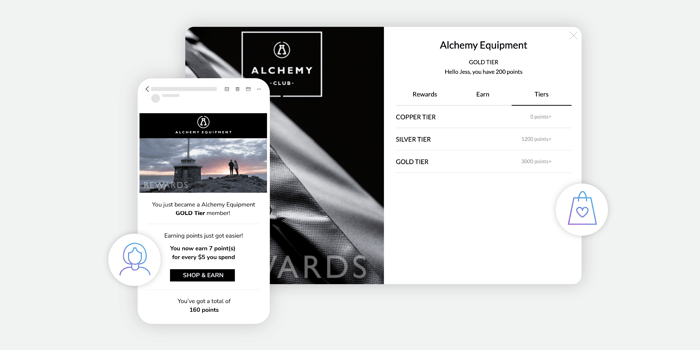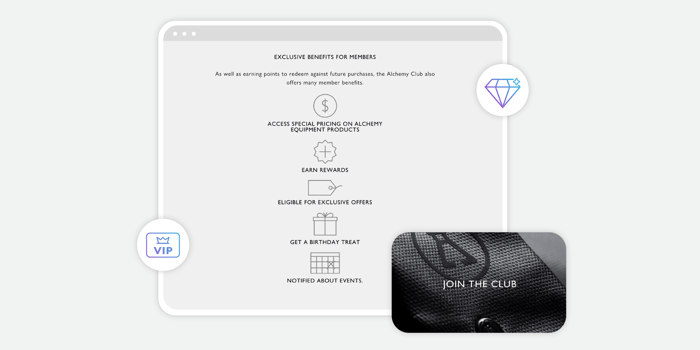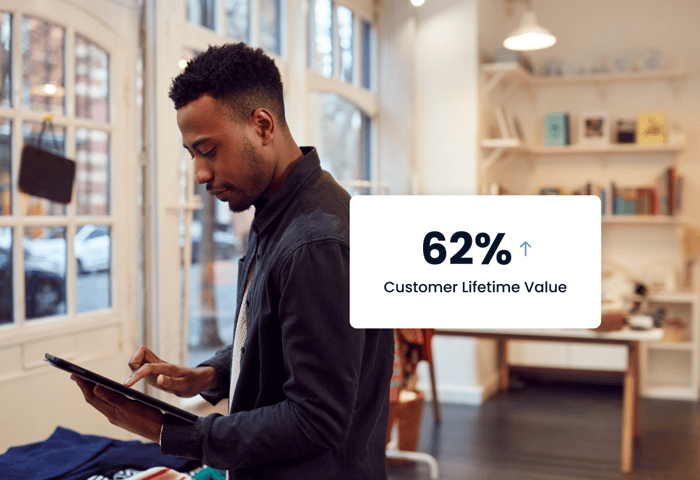
Differentiating Your eCommerce Store From the Competition
Written by Sophie Macdonald | ReadeCommerce stores that stand out from the crowd have a few things in common and can be crucial sources of insight into how to differentiate your store from your competitors’.
Using your unique twist to build on what others have done can make a big impression on your customers. As Jack Ma, Executive Chairman of Alibaba, says, “You should learn from your competitor, but never copy.”
The eCommerce industry is growing at a rapid rate, making it even more important for merchants to be creative and differentiate themselves from competitors. With approximately 1.8 million online retailers in the U.S. and 7.1 million worldwide, shoppers are shifting from in-store purchases to online buying.
In 2019, 14.1% of all retail sales worldwide were from eCommerce sites, and this is expected to grow to 22% by 2023. Differentiating yourself is crucial if you want to reach those customers — so let’s dive into some strategies for ensuring that you stand out against your competitors time and time again.
Make Each Shopping Experience Unique
Providing a quality product and a smooth selling experience make for a great start, but that isn’t enough to make a lasting impression. Creating a unique and memorable shopping experience is what will make you stand out from the pack – by making a personal connection, for instance.
Consider adding live chat to your online store for customers who have questions during the buying process, or take outreach a step further with video chats that facilitate technical support or help customers choose great accessories for their purchased items.
Cross-channel marketing is another way to make the customer experience unique. Tools such as shareable wish lists, social media promotions, and on-site product reviews help create a community of frequent customers that interact with each other and build enthusiasm for your brand.
Understand Your Competitor’s Approach
It’s important to study and understand what your competitors are doing to allow you to create a unique experience for your customers. Analyze your direct competition to figure out the similarities and differences between their approaches and yours and use that information to your advantage.
Before you start researching your competitors, have a goal in mind for what you need to find out. You might be interested in comparing product offerings, website design, or pricing strategies. You might also want to understand how competitors use social media and where they advertise.
Some information about your competitors can be gained simply by perusing their websites and signing up for any newsletters or text message promotions they offer. For more in-depth competitive research, use online SEO tools that track keyword usage, web traffic rankings, and backlinks.
9 Ways to Differentiate Your eCommerce Store
Differentiating your eCommerce store might seem overwhelming, but you can break the process down and tackle specific aspects of your site one at a time. Focus on methods that first highlight the strengths of your brand, then branch out to make your online store excel in these nine areas:
1. Great customer service
Product selection and pricing might be what gets customers to check out your eCommerce store, but stellar customer service is what keeps them coming back. Here are some ways to make your customer service the best in the business:
-
-
-
Make your policies crystal clear. From returns to shipping and fulfillment charges, let customers know what to expect upfront, which prevents any issues that might damage your reputation.
-
Offer multiple communication options. Some customers might prefer email or phone contact, while others might prefer online chat through on-site chatbots or social media. Keep someone on staff who can respond to these different forms of communication, so customers always feel like you’re listening to their concerns.
-
Ask for customer feedback, and listen to what customers tell you. Track online reviews about your business and be open to changes based on what consumers are saying about you.
-
-
One element of customer service is personalized attention. When shopping in-store, customers may get that personal attention in person – but online, you can personalize your marketing so that it feels like it’s designed just for them. Marsello offers features that help eCommerce store owners implement the below strategies.
-
-
-
Use SMS marketing tools to send exclusive coupons or offers for birthdays and anniversaries.
-
Create a loyalty program and offer exclusive sales for customers who join, making sure that your most loyal customers are always the first ones to know about new products or deals.
-
-
Collect data about a customer, such as date of birth, when they register on for your loyalty program or site; this not only makes personalizing offers easier but also allows you to incentivize customers’ actions with rewards. Fashion retailer, T.C. Elli’s, has done a great job of incorporating data collection and a referral program into their Marsello-powered loyalty program, as shown in the example below.
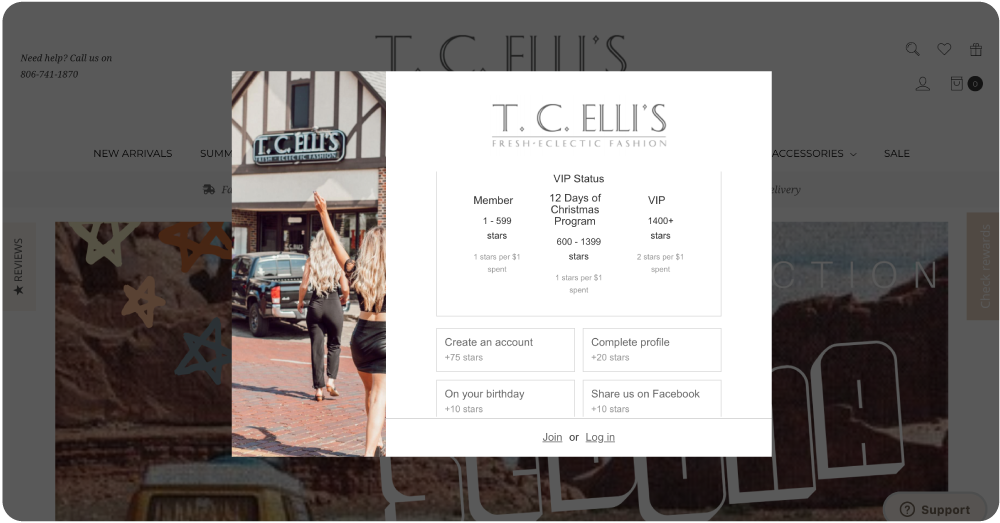
2. A unique brand
Your brand is your calling card – it’s what makes your store memorable long after the sale is complete. Developing your unique brand can help you stand out in the crowded marketplace and lead to big rewards. Some things to think about when you build your brand:
-
-
-
Your brand’s voice: think of this as your brand’s personality. It should be consistent across all of your marketing materials and so distinct from your close competitors that, even without seeing the brand name, consumers recognize it as yours. Your brand voice might be edgy, playful, refined, or practical – just make sure it fits your target market and that it’s consistent.
-
Your brand’s value proposition: show consumers what they’ll get from your store, and your store alone. This should communicate your brand’s value and why you’re a better choice over the competition. Figure out what problem your store solves for customers and how you meet their needs in a way that others don’t.
-
Your brand’s story: a story gets customers emotionally invested in your brand. It may include the reasons you started your business or the progress you made over the years to become the company you are today. A captivating narrative helps customers feel like they know your brand well, which makes them more likely to choose you over a less familiar company.
-
-
Singapore-based lingerie retailer, Our Bralette Club, offers an excellent example of a brand story that speaks directly to its target market and simultaneously offers outstanding customer service.
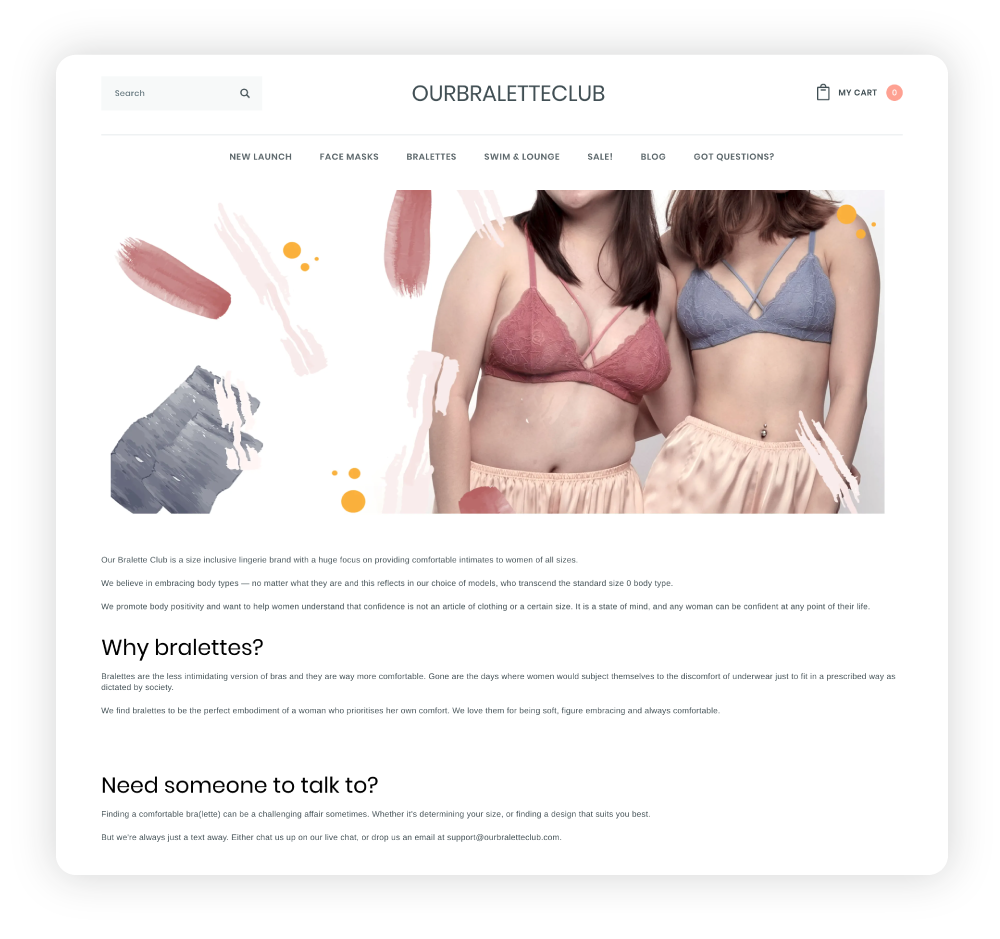
3. One-of-a-kind products with compelling product pages
Offering unique products that aren’t available elsewhere gives customers a reason to shop from your eCommerce store instead of exploring another company. And how you present those products matters, too. Compelling product details and visuals help consumers come to a buying decision, giving them the confidence to finalize their purchase.
Having one-of-a-kind products doesn’t necessarily mean inventing something completely new. In some cases, it might simply mean changing the look of a product to cater to your particular customer base. If everyone else is offering an accessory in standard black and white colors, consider adding a hot pink or patterned version to your product selection.
Your product pages need a few essentials to meet customer expectations. Transparent pricing and details, such as size, color options, and materials, help consumers make an informed selection. To make your product pages more engaging, add descriptive copy that entices the customer and pictures that show the product in a variety of contexts.
Include fun and personalization in your product pages. Witty copy or creative photos help sell products that aren’t particularly exciting on their own. Showing customization options with a range of features prove that you can meet your buyers’ individual needs. (Remember to use humor only if it’s appropriate for your audience, message, and brand.)
Avoid bogging down your product pages with too much information. It should be easy for your site visitors to find the information they need. Creating a clear, consistent template across all of your product pages helps customers compare multiple items to make their selection.
This product page from NaturallyCurly offers an example of clear product information (including ingredients, a description of what customers can expect, and details on how to use the product), a high-quality product image photo that accurately sets customer's expectations, and they even go the extra mile with the addition of customer reviews (take note of the rave review this customer has about NaturallyCurly’s customer service, helping customers to feel confident in the brand):

It’s worth mentioning that clear product descriptions, high-quality images, proper tagging and categorization of products, and add-ons like customer reviews also help with SEO and will improve the likelihood of acquiring new customers organically.
4. Competitive price point
Pricing can make or break a sale, but this doesn’t mean that you need to undercut everyone else to capture market share. If your prices are higher than the competition, showcase the reasons why.
This product page from évolis Australia dives into the specific details about this hair product to let customers know what it is that makes it stand out and why they should buy it instead of potentially similar products on the market. By drawing customers' attention to ingredients in the product and reinforcing that it was designed by industry professionals, shoppers will feel more confident that they're purchasing a product that will serve their needs as expected.
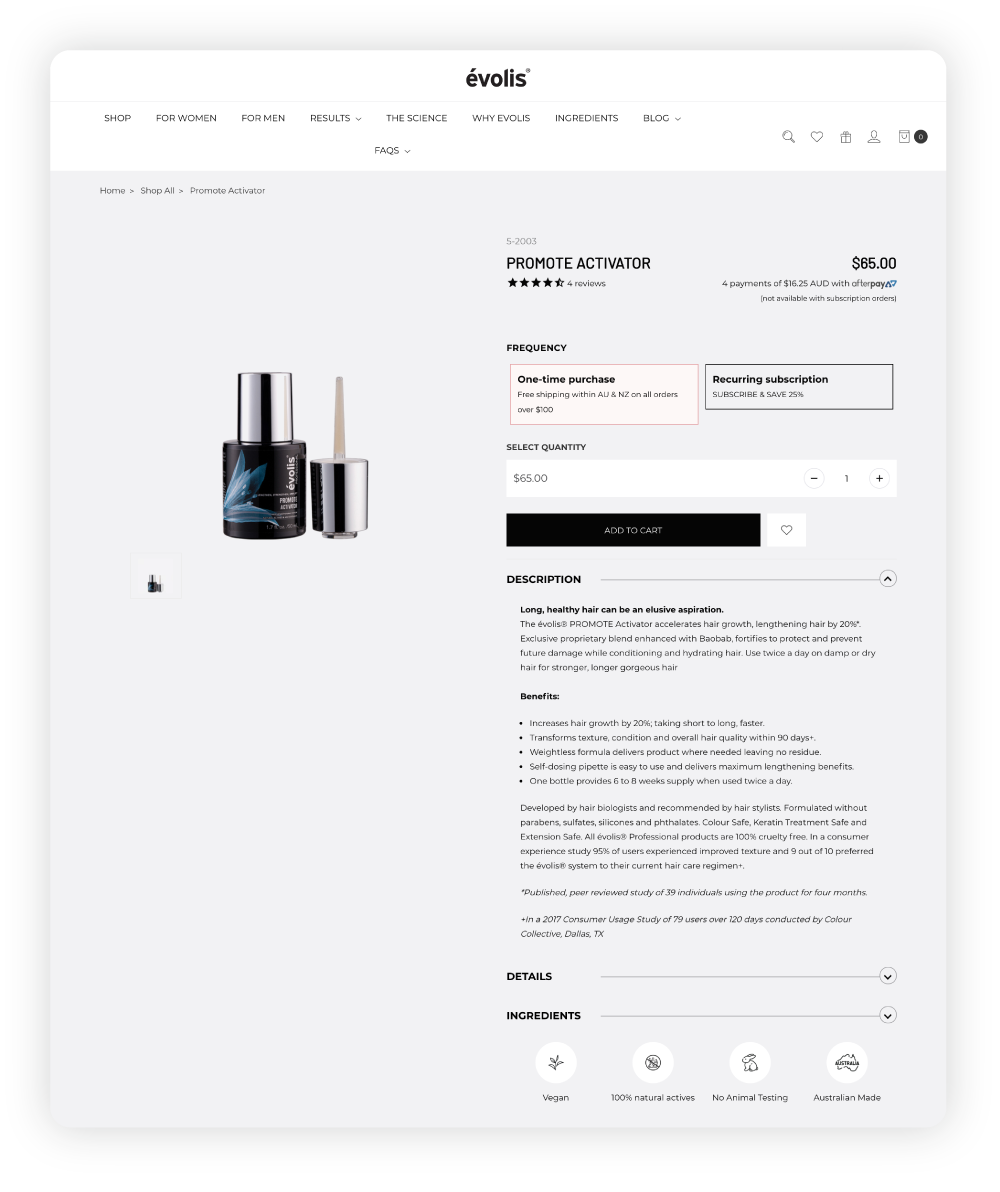
5. Easy-to-navigate site
Ease of navigation affects how long visitors stay on your page, and the longer a visitor lingers, the more likely they are to buy. Put navigation buttons in an easy-to-find place on every page so customers can quickly access your home page or their checkout cart.
Watersports supplies store, Splash, has an easily navigable and visually enticing online store. Drop-down navigation menus at the top of each Splash page make it easy for customers to quickly access specific categories based on what specialized equipment they may be shopping for, and a link to the customer’s cart offers quick checkout capability.
The Featured categories section is another way Splash reinforces its visual aesthetics and easy-to-use navigation. It works as a quick way to get shoppers where they need to go, in a much more visual-forward way than does the main navigation bar.

Page load speed is another aspect of site design you need to consider. When your site takes too long to load, consumers are likely to go elsewhere to find what they need. Set up separate versions for computer users and mobile users to optimize loading and presentation.
6. Streamlined checkout process
With an overall cart abandonment rate of 55% to 80% for online merchants, developing a streamlined checkout process is one way to keep customers around until the sale is complete. Here are some ways to ensure that checkout goes as smoothly as possible:
-
-
-
Create a clear, simple way for customers to add items to their cart. A button with the words “Add To Cart” should be displayed prominently on each product page.
-
Include a button on each page that takes customers immediately to the payment page. A “Buy Now” or “Pay Now” button helps to encourage impulse purchases.
-
Let customers quickly peruse what they already have in their carts. A drop-down visual enables them to check the contents in their cart without leaving the product page, making it easier for them to add new items. Also, show a summary of all items in the cart whenever a new item is added.
-
Eliminate barriers to buying. Give customers a way to buy as a guest instead of having to register with your site to make a purchase, and offer multiple payment options to ensure buyers aren’t deterred by not having the right type of payment method.
-
-
For a good example of a simplified checkout, look at the Heirloom Traditions Paint page below. The drop-down cart menu lets customers see everything in the cart without leaving the shopping page.
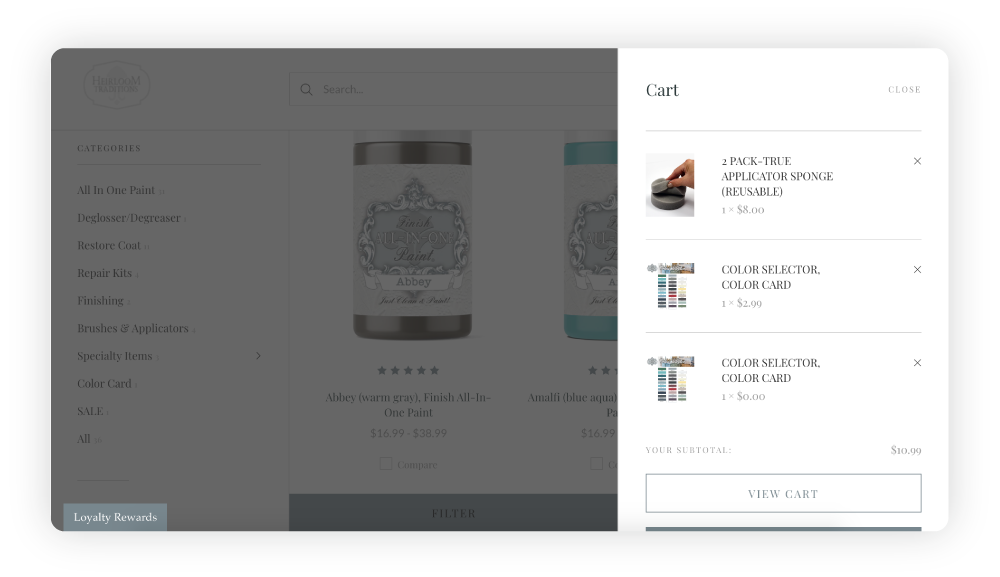
7. Run a referral program
A good referral program can differentiate your eCommerce business by creating a relationship with customers that turns them into brand ambassadors. About 83% of people say they trust recommendations from friends or family members, making word of mouth a valuable way to introduce your unique brand to new customers.
To create a referral program that stands out from eCommerce competitors, meet your customers where they are. That might mean rewarding customers for referrals on social media or embedding the referral program details on your main page to make sure site visitors know about it. You can integrate your referral program into an overall reward program, as wellness and beauty brand, Switch2Pure, does in the example below:
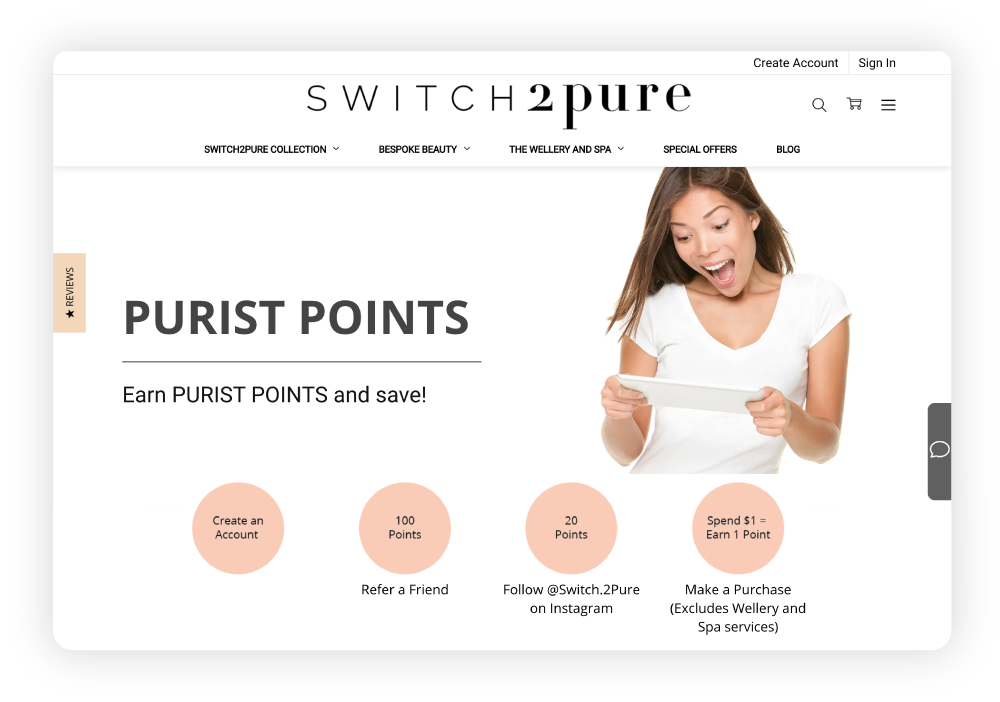
Another way to create an attention-getting referral program is to offer a bonus that’s more than just a small discount. Consumers are used to seeing referral programs that provide 10% to 25% off for each referral, but a program that gives them a free item or exclusive access to specific products will make them eager to refer someone to your store.
8. Implement a cohesive content strategy
Making your content strategy cohesive and consistent helps establish your identity in a crowded eCommerce marketplace. Treat content creation as a thoughtful process, and consider how each piece you create fits into your overall brand.
Understanding your brand and precisely identifying your target market helps you maintain this kind of consistency. Figure out exactly what your customers want and need, and show them how your products provide it. Kate Quinn’s Little One of the Week blog features real children wearing the store’s products. This user-generated content is actively targeted to customers and encourages them to share their own content with the brand as well.
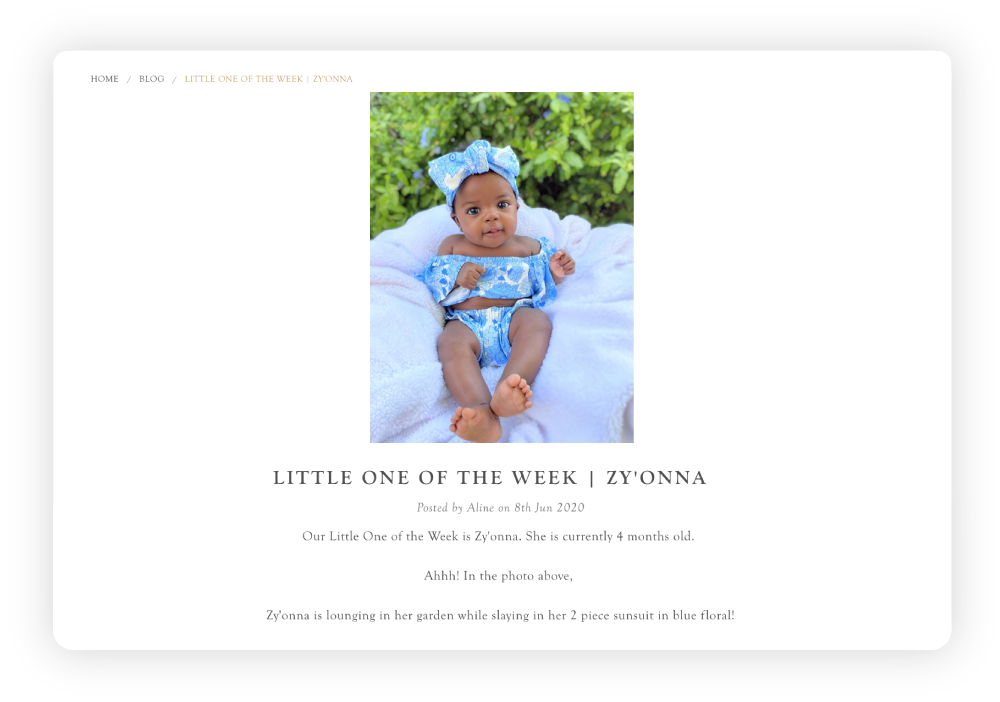
9. Personalize, personalize, personalize
Personalization gives customers the impression that your brand speaks directly to their needs. Some ways to achieve a sense of personalization in your eCommerce store include:
Personalized product recommendations
Show items that the customer has previously viewed or complementary products to goods they’ve already purchased. The example below shows how Heirloom Traditions Paint incorporates this concept into their email marketing. By showcasing related products in an automated email flow that thanks first-time customers, the Kentucky-based paint supplier is actively targeting recently acquired customers with data from shoppers just like them, while also offering an astounding discount of 30% off:
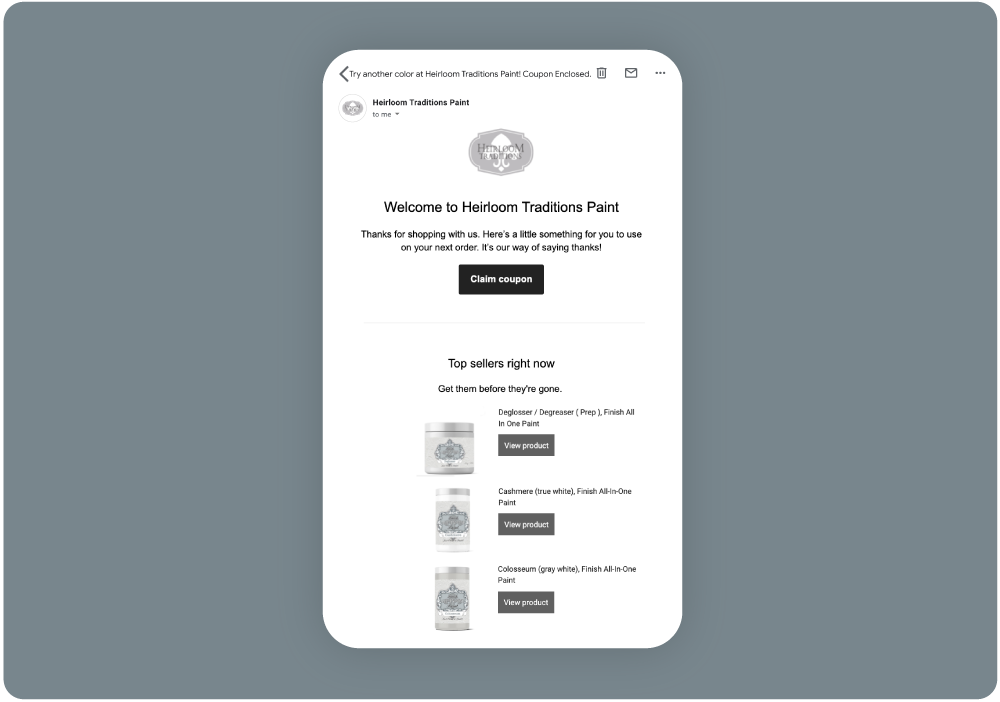
Personalized product recommendations can be a great way to trigger, or at least inspire, the customer’s next purchase. Heirloom Traditions Paint has seen such impressive success that they’ve made over $145,800 in revenue on just their automated email flow which sends to first-time customers.
There’s so much value that comes along with email marketing. It’s a channel that gets some of the highest returns on investment as far as conversions, and it can be highly automated. That means, when your system is triggering a ‘thank you’ email or an abandoned cart reminder, your brand is staying in the forefront of your customers’ minds without the time and effort of a manual process on your end.
Generate a personalized homepage
Using cookies and prior data about each customer can help you create a personalized experience for anyone who visits your site more than once. Design your site to display a welcome message with the customer’s name once they’ve input their information during the checkout process or signing up for a reward program.
10. Run campaigns with email and SMS marketing.
With so much competition out there, staying top-of-mind with your customers will take some effort. But the good news is that there are plenty of ways and channels to do so.
Email marketing can be incredibly valuable because customers need and expect emails from you as updates on the status of their orders, etc. You can cover your bases here with campaigns that touch customers throughout the journey; for example:
-
-
-
As a thank-you for first-time customers,
-
To win back lapsed customers, or
-
Recover abandoned carts.
-
-
SMS marketing is a relatively new tactic that brands are using with some success. Information overload is real – and, as everyone’s email inboxes keep filling up, you may get more ROI from showing up in their text message inbox instead. With SMS marketing you can achieve:
-
-
-
Higher open rate than emails
-
Higher ROI with spend
-
Ability to target audiences on mobile devices
-
Faster delivery to the recipient after sending.
-
-
The most important things to remember about SMS marketing are to always add value and to use personalization when possible. Value can come in the form of a unique sales offer, time-sensitive deal, information necessary to participate in a specific event, or intros to new products or services. With personalization tactics, you can make sure those value-add messages go directly to the audience members who need or want them the most.
Conclusion
The eCommerce playing field is increasingly crowded – but as online shopping increases, there are more opportunities than ever to differentiate yourself from your competitors. First, you have to understand your competitors’ approach. Then you can use that information to set yourself apart.
We went over ten ways to differentiate your store and your business, to name a few: strong branding, a personalized sales experience, unique products, and impressive customer service. By focusing on establishing a strong brand identity first, the rest of the improvements you make to your website are much more likely to align with that vision.
Use these tips to develop an emotional connection with consumers and reap the rewards of more sales and increased referrals. Your long-term success depends on it.
This blog was written for Marsello by the talented team at BigCommerce.





